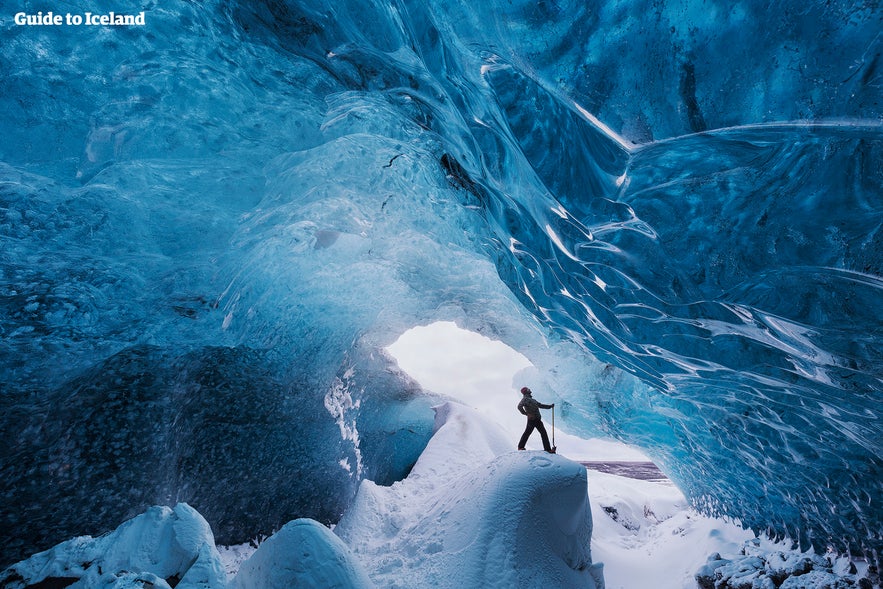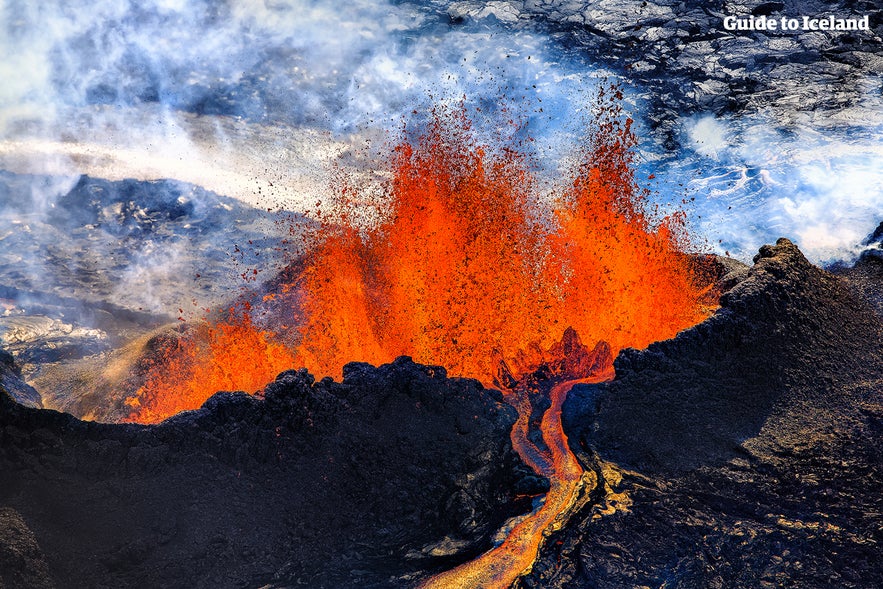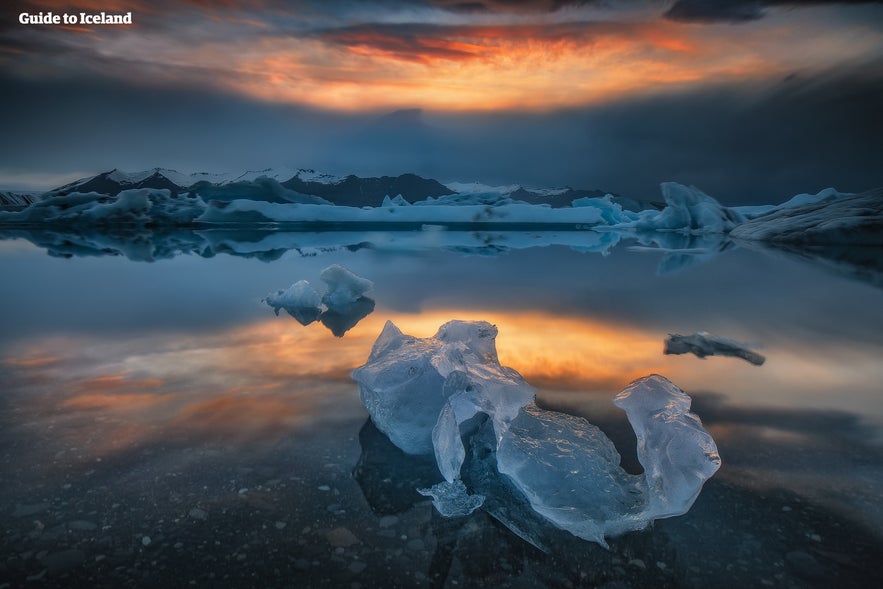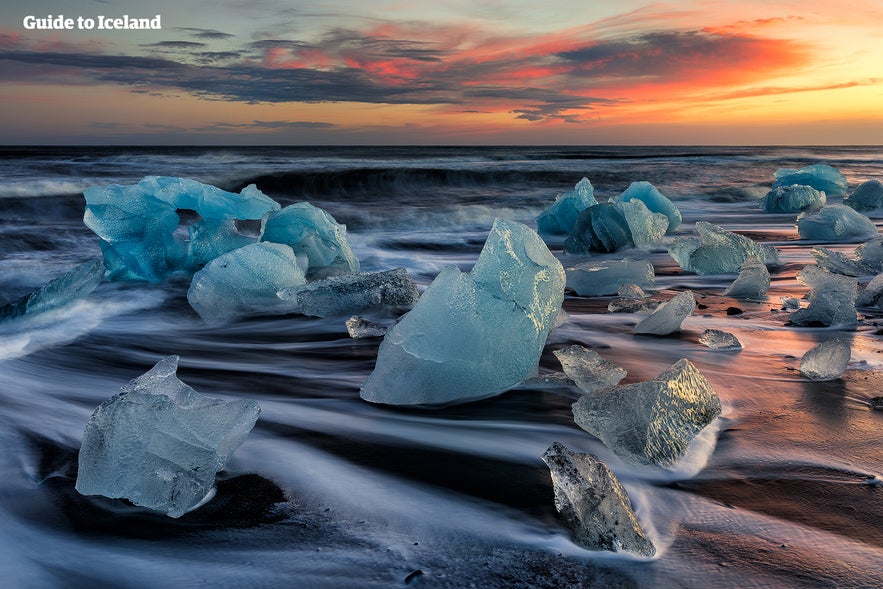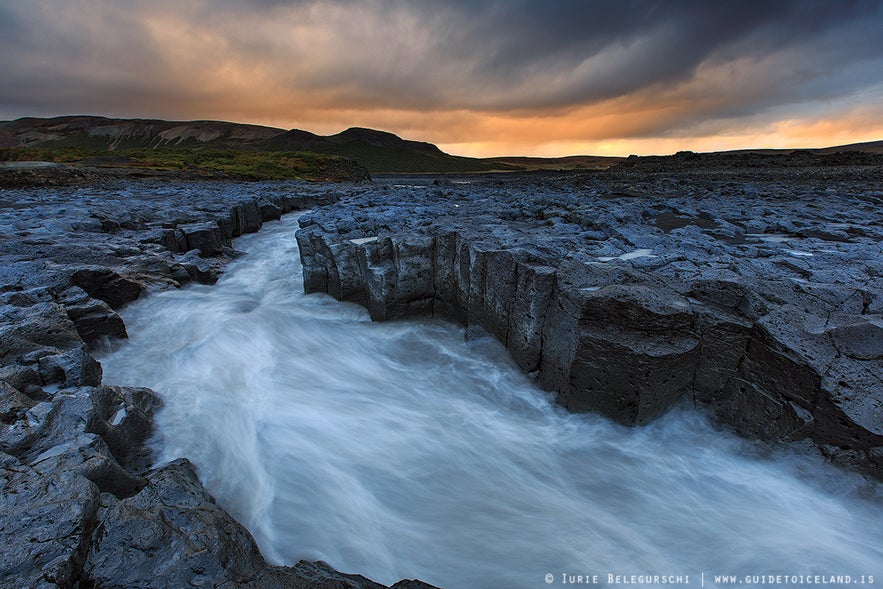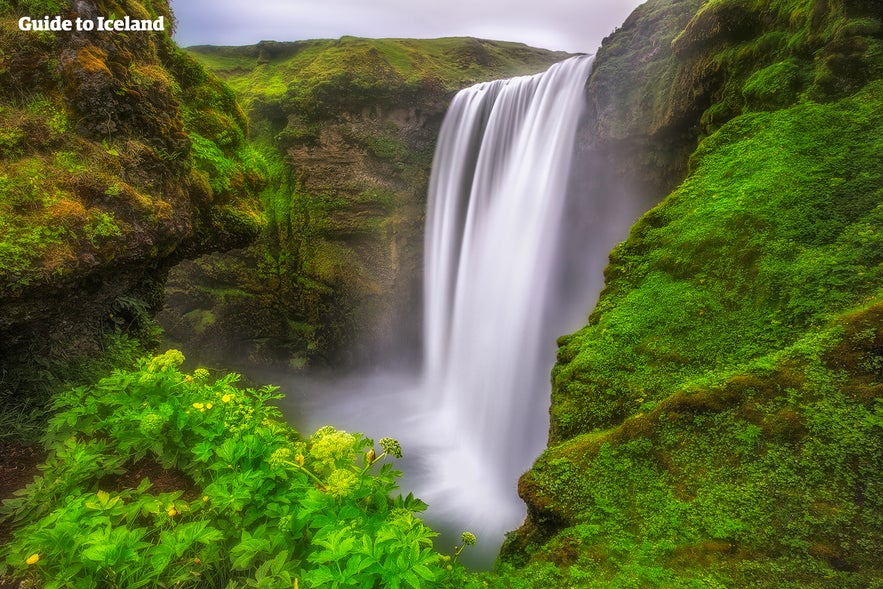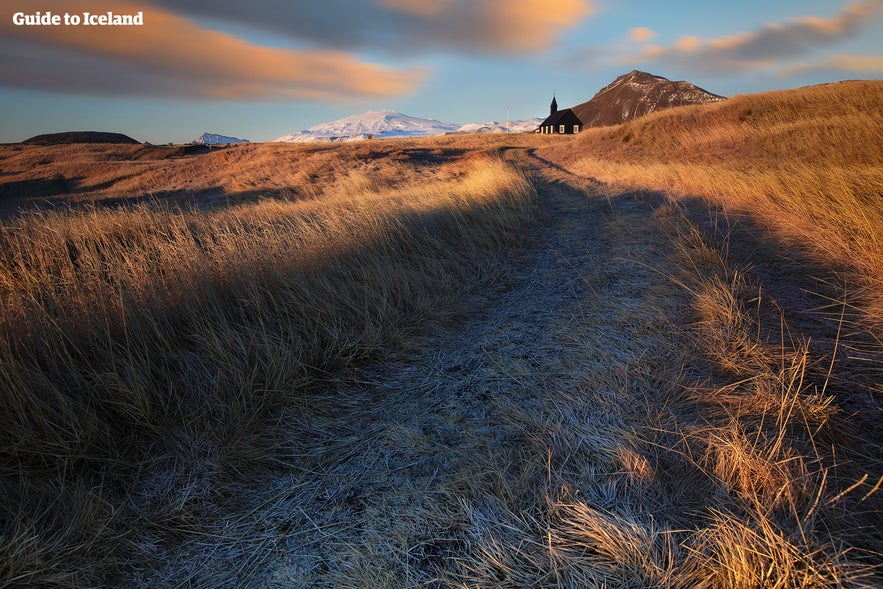
Glaciers in Iceland

Iceland is known as 'The Land of Fire and Ice'. That is because it has both glaciers and volcanoes dotted around the island. How many glaciers are there in Iceland, where are they and what exactly is a glacier?
A glacier is a large, persistent block of ice. Glaciers only form on land when snow stays long enough in one place to turn into ice. Over years, centuries even, the snow is compressed into thick ice masses.
- Go here to visit the largest selection of Glacier tours in Iceland
What's unique about glaciers is their ability to move. They crawl forward due to sheer mass - like very slow rivers. Although glaciers are persistent, they slowly deform as they flow, creating crevasses, cracks, and sometimes beautiful glacier ice caves!
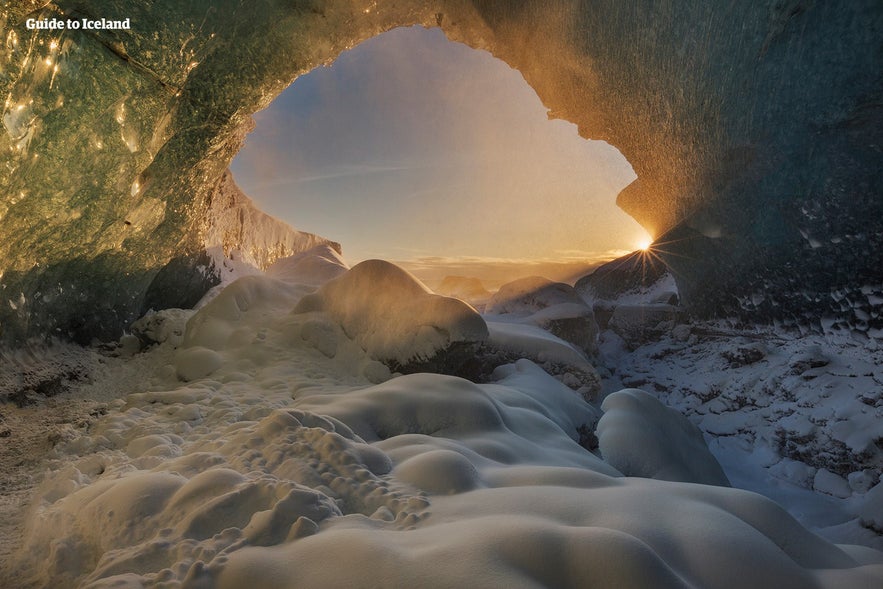
Natural glacier ice caves vary each year in size and shape, but they all have gorgeous ice formations and some spectacular blue ice in common. No wonder they are a popular travel attraction.
Natural ice cave experiences, like this ice cave tour in Vatnajokull, are best done between mid-October or November (depending on the operator) to March each year.
This two-day tour takes you to an ice cave along the South Coast with northern lights hunting during the winter months.
In Iceland, there are many volcanoes and many glaciers that have formed on top of active volcanoes. When the volcanoes erupt; the glacier ice above them melts very quickly, creating devastatingly destructive rivers called jökulhlaup, or a 'glacier run'.
Jökulhlaups, or glacial floods, have caused significant destruction in Iceland over the years. One notable example is the Skeiðarárbrú bridge, which was destroyed during the massive glacial flood of 1996. Today, the remnants of the bridge have been transformed into a scenic picnic area, complete with informational signs that detail the event and its impact. Visitors to the area can also enjoy breathtaking views of Svínafellsjökull in the background, adding a touch of natural beauty to this historical site.
Glaciers cover over 10% of Iceland's landmass, making them a defining feature of the country's landscape. Visitors can experience these icy giants up close through exciting activities such as ice caving, snowmobiling, or glacier hiking, offering unforgettable adventures for all levels of experience.
- Check out: Snowmobiling in Iceland - all you need to know
- Or see also: Glacier hiking and ice climbing in Iceland
Read on to discover more about Iceland's most iconic glaciers and the unique stories that make them such an integral part of the country’s identity.
Vatnajokull Glacier
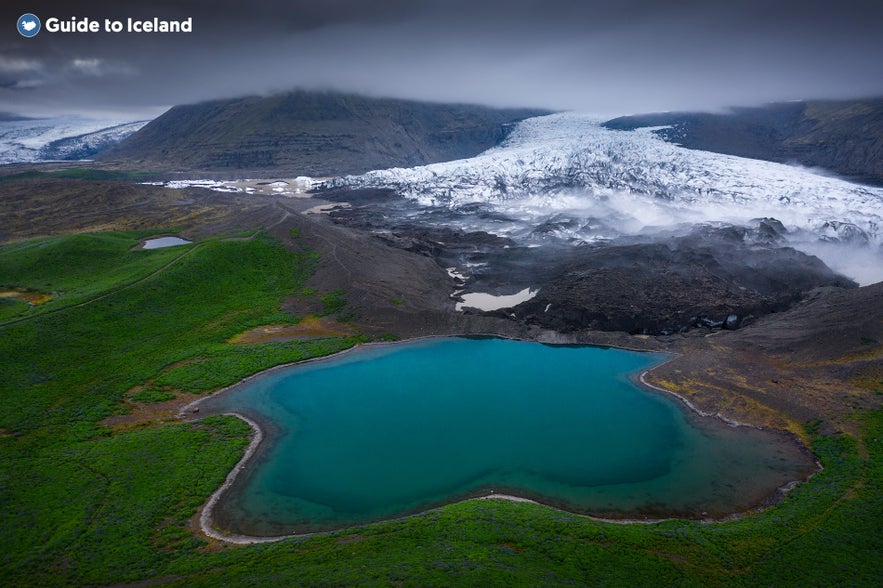
Vatnajökull glacier is the largest glacier in Iceland - and Europe! Vatnajökull is situated in the southeast of Iceland and is so large that it has many glacial tongues on every side (like most of the largest glaciers in Iceland), each with an individual glacier name.
There are so many that I will not list all of them here. The most notable would be Öræfajökull glacier, a popular one for hiking since the highest peak in Iceland is located there: Hvannadalshnjúkur.
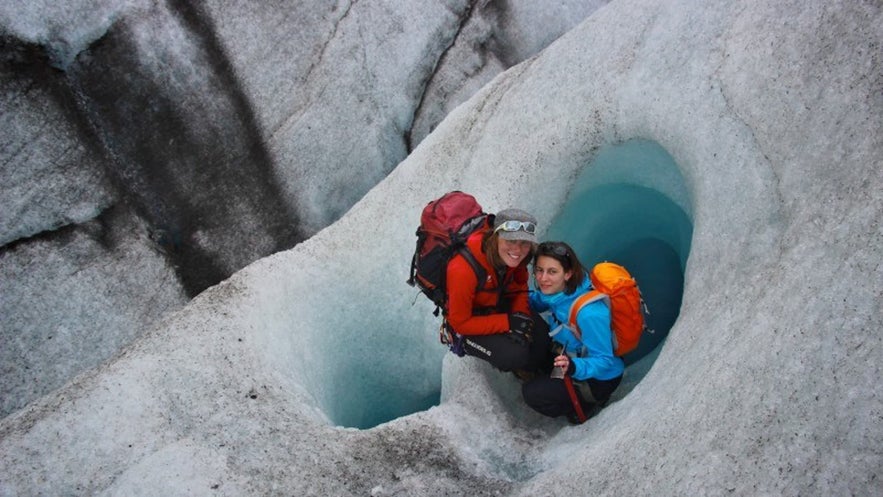 Photo from: Skaftafell Glacier Expedition
Photo from: Skaftafell Glacier Expedition
Another popular glacier tongue is Svínafellsjökull, and glacier hiking tours from the nearby Skaftafell Nature Reserve often head there. Svínafellsjökull is also famous for being the filming location for scenes in both Interstellar and Batman Begins. To stay close, it's a good idea to book accommodations in South Iceland so you don't have to drive back to Reykjavik after the excursion.
- See also: Movie locations in Iceland
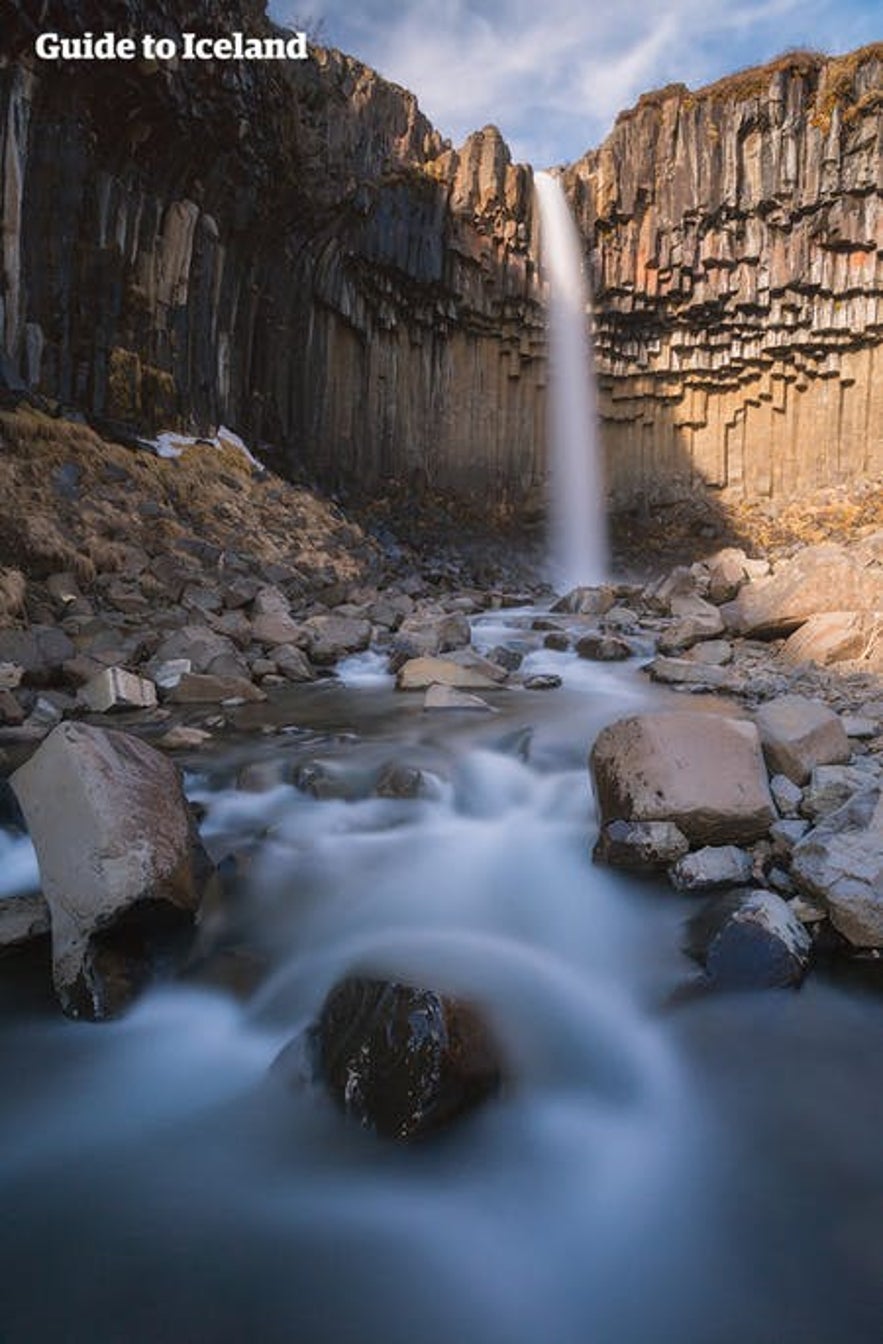
Skaftafell Nature Reserve used to be a National Park in its own right, but was joined with Jökulsárgljúfur National Park in 2008 and extended to include the entirety of Vatnajökull glacier and is now called Vatnajökull National Park.
However, the most popular information center for Vatnajökull National Park is still at Skaftafell Nature Reserve, where you can also find a campsite, cafeteria, the start of numerous hiking trails, and the meeting point for glacier hikes.
- See also: National Parks in Iceland
The most active volcano system in the country, Grímsvötn, is situated in the Vatnajökull glacier. The last eruption to take place there, was at Holuhraun in Bardarbunga, from August 2014 until March 2015.
- See also: Volcanoes in Iceland
You can also find the beautiful glacial lake Jökulsárlón on the southeast side of the glacier. Jökulsárlón glacier lagoon is extremely beautiful, and Iceland's deepest lake. In it, you'll see a number of large icebergs that have broken off the glacier itself.
Not far from the lagoon, you can also find Iceland's Diamond Beach, where the icebergs that have become small enough to wash out to sea have been tossed back to shore and slowly wait to melt on the black sands.
Vatnajökull National Park covers the entire glacier and an extensive area all around it and is the largest national park in Europe, a total of 12,000 km2 (4,600 sq miles)!

It's hard to explore it in detail due to its enormous size, but the easiest way to see the glacier is by visiting Skaftafell and Jökulsárlón, as well as drive alongside it on the east side. In order to see the north or west side of the glacier, a 4x4 car is necessary and it can only be done in the summertime.
Langjokull Glacier
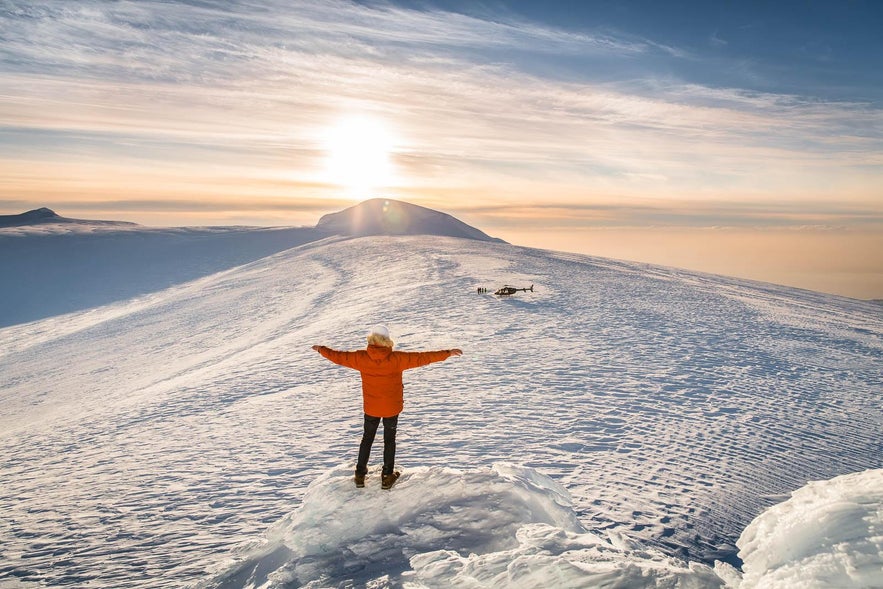
Langjökull is the second biggest glacier in Iceland. The name means 'Long glacier' and derives from the shape of the glacier. It is situated in the west of the Icelandic highlands and can easily be seen from Geysir.
Langjökull is very popular for snowmobiling tours in combination with The Golden Circle, seeing as it is such a short drive from Gullfoss waterfall. Going snowmobiling on the glacier is the best way to cover a large section of it and get a feel for the glacier.

If you don't want to traverse the glacier on a snowmobile, then you can also explore it from the inside!
Since 2015 it has been possible to go and explore Langjökull glacier from the inside, as man-made ice cave tunnels have been made into the glacier.
You can choose to go on an ice cave tunnel tour, or even throw a party or get married inside the glacier seeing as there is even an ice chapel inside.
Additionally, there are 2 active volcanoes in Langjökull glacier.
Hofsjokull Glacier
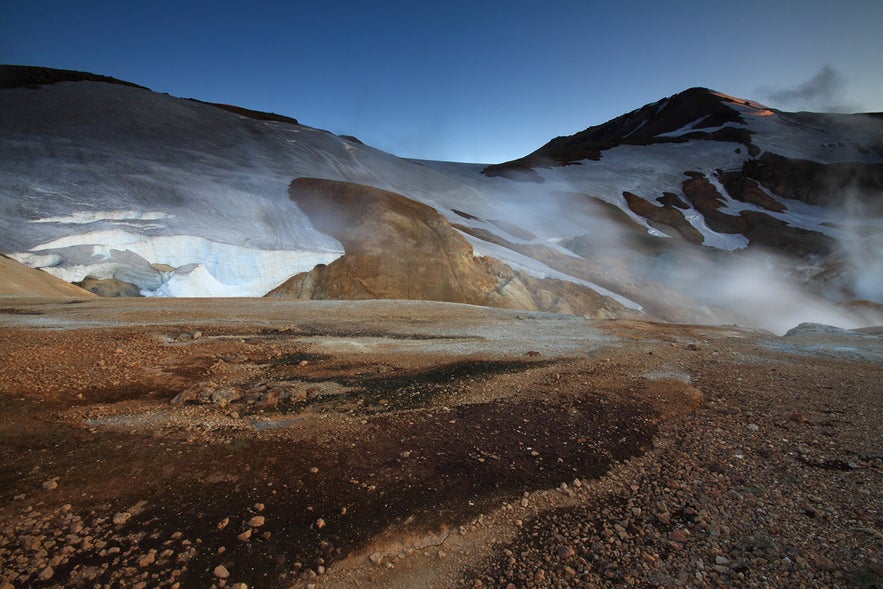
Hofsjökull glacier is the third biggest glacier in Iceland, and one of the hardest to reach. It is situated in the middle of the Icelandic highlands. The highlands are only accessible during summertime, and then only with a 4x4 car and preferably with a guide that knows the area well.
Hofsjökull is the largest active volcano in Iceland, a shield with a caldera. It is also the source for various rivers in Iceland, including Þjórsá, Iceland's longest river.
The road Kjölur runs between Hofsjökull and Langjökull, connecting the south to the north of the country. The Kjölur road is a part of the highlands and therefore only accessible during summertime.
- Press here to find a Kjölur self-drive trip
Myrdalsjokull Glacier and Eyjafjallajokull Glacier
Mýrdalsjökull glacier is the fourth largest glacier in Iceland and is right next to Eyjafjallajökull glacier, which is the sixth-largest in the country. Both glaciers are situated in the south of Iceland.
Although Mýrdalsjökull is larger than Eyjafjallajökull and holds one of the largest and most active volcanoes in the country, Katla, Eyjafjallajökull has become more known in recent years because of its 2010 eruption.
Between the two volcanoes is a very popular hiking path called Fimmvörðuháls, which now brings people right on top of the newly erupted volcano where there is a newly formed, still warm, mountain. The start of the hiking path is the staircase right next to the popular Skógafoss waterfall.
Solheimajokull Glacier
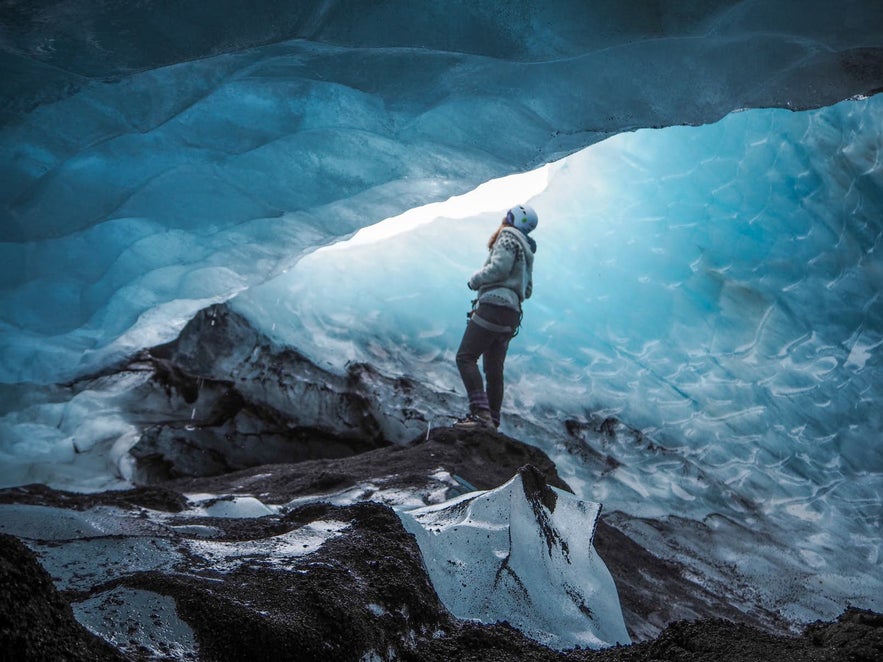 Photo from Solheimajokull Glacier Hike | 3-Hour Expedition
Photo from Solheimajokull Glacier Hike | 3-Hour Expedition
Sólheimajökull glacier is actually a part of the larger Mýrdalsjökull glacier. Sólheimajökull is a so-called glacier tongue and is a very popular location for ice hiking and ice climbing since it's easily reached from the ring road.
Sólheimajökull is rugged and full of impressive ice crevasses, making it an ideal location for glacier hikes and ice climbing. You might even come across some small ice caves or tunnels when exploring Sólheimajökull glacier.
Drangajokull Glacier
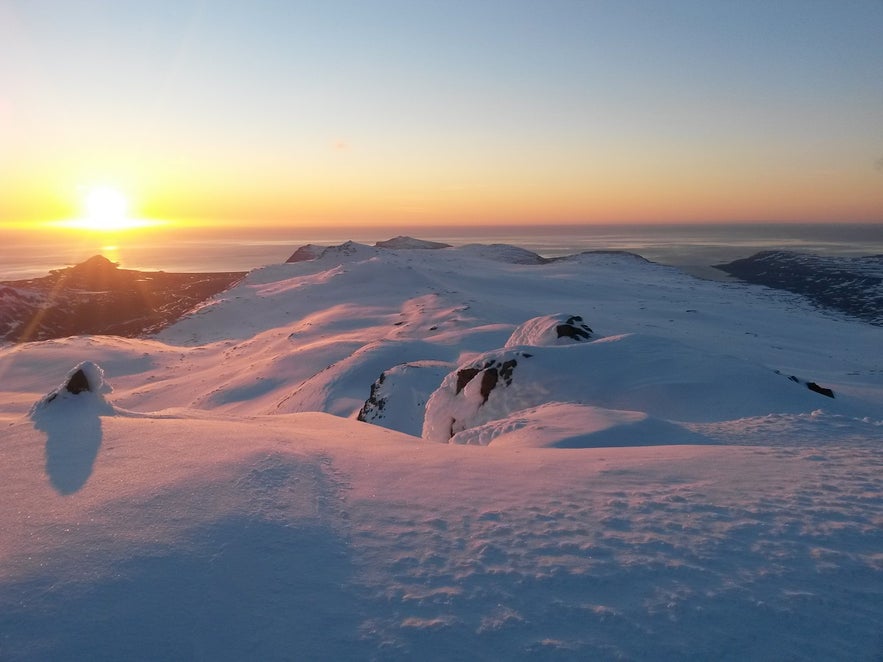
Drangajökull glacier is situated in the Westfjords and is the fifth largest in the country. It is the only glacier in Iceland that has not decreased in size during the past few years and is also the only glacier that is entirely below 1000 meters.
It can be a little tricky to reach Drangajökull glacier since it's situated far north in the remote Westfjords, just a little south of the Hornstrandir Nature Reserve. However, there is both a Drangajökull Glacier Adventure and a Drangajökull Glacier Midnight Adventure that you can go on during summertime to admire the midnight sun.
- Read about the midnight sun in Iceland
Snaefellsjokull Glacier
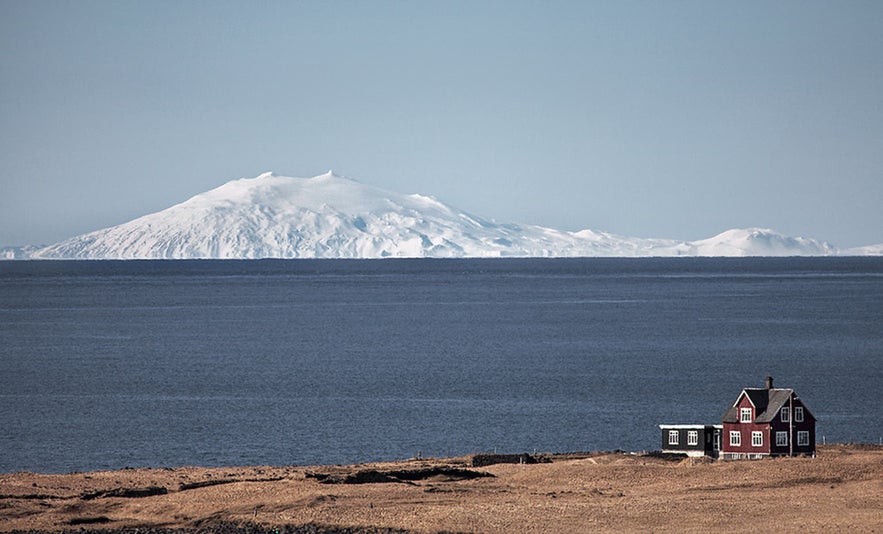 Photo by Jón Óskar Hauksson
Photo by Jón Óskar Hauksson
Snæfellsjökull glacier is not one of the largest glaciers in Iceland, only the 13th largest - and sadly it is rapidly decreasing in size.
It is nonetheless one of Iceland's most famous glaciers. It is situated on the tip of Snæfellsnes peninsula and can be seen from Reykjavík on a clear day, like a crown across the Faxaflói bay.
The small glacier is the jewel of Snæfellsjökull National Park, one of three national parks in the country. Like many other glaciers in the country, Snæfellsjökull is also a volcano, a stratovolcano shaped like a cone.
Snæfellsjökull was eternally made famous in Jules Verne's Journey to the Centre of the Earth, as the entry point to the center of the earth. In August 2012 the summit was ice-free for the first time in recorded history.
The surrounding area is stunning and full of lava fields, black and golden beaches, birds and seals, waterfalls, peculiar rock formations, and cliffs. Snæfellsnes peninsula is easy to reach, and it's possible to drive all around the Snæfellsjökull glacier or hike to its top. A 4x4 car is recommended to drive the mountain road on the east side of the glacier.
Andere interessante artikelen

De ultieme gids voor de zuidkust van IJsland
Wat zijn de meest populaire bezienswaardigheden aan de zuidkust van IJsland? Aan welke activiteiten kunnen bezoekers hier deelnemen? Hoe lang duurt het om vanuit de hoofdstad Reykjavík naar de zuidk...Lees verder
De Ultieme Gids voor IJsland in augustus
Ontdek alles wat je moet weten over een bezoek aan IJsland in augustus in deze complete gids. Leer welke wilde dieren je kunt zien, hoe het weer in IJsland is in augustus, welke locaties de moeite waa...Lees verderDe complete gids voor de Jokulsarlon-gletsjerlagune in IJsland
Leer alles wat je moet weten over Jokulsarlon, een gletsjerlagune met talloze ijsbergen in het Zuiden van IJsland. Vanwege zijn geweldige schoonheid is deze ijslagune inmiddels een van de populairst...Lees verder

Download het grootste reisagentschap van IJsland op je telefoon en beheer je hele reis op één plek
Scan deze QR-code met de camera van je telefoon en klik op de link om het grootste reisagentschap van IJsland in je zak te stoppen. Voeg je telefoonnummer of e-mailadres toe om een sms of e-mail te ontvangen met de downloadlink.
